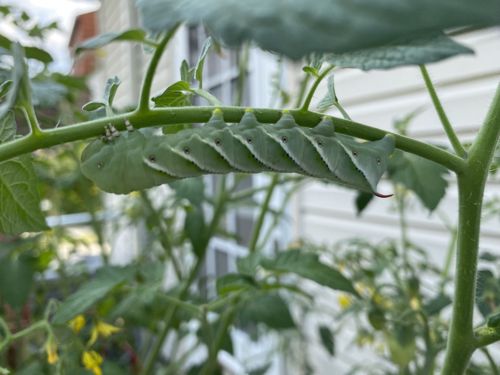Tomato Hornworm
Scientific Name: Manduca quinquemaculata
Order & Family: Lepidoptera, Sphingidae
Size: Larvae can grow quite large, typically from 3 to 4 inches (7.5 to 10 cm) in length when fully mature.

Natural Habitat
Gardens, farms, and any area where their host plants (especially tomato plants) are grown. They are particularly common in backyard vegetable gardens.
Diet & Feeding
Strictly herbivorous, feeding primarily on the leaves, stems, and fruits of plants in the Solanaceae family, including tomatoes, tobacco, potatoes, eggplants, and peppers.
Behavior Patterns
Tomato hornworms are voracious eaters, capable of defoliating entire host plants in a short period. They are masters of camouflage, blending in perfectly with the plant foliage, making them difficult to spot until significant damage has occurred. When mature, they drop to the soil to pupate, typically overwintering as pupae and emerging as hawk moths in the spring.
Risks & Benefits
Potential risks include significant damage to tomato and other solanaceous crops, leading to reduced yields or complete crop loss for gardeners and farmers. Benefits are primarily ecological, as the adult hawk moths are important nocturnal pollinators for certain flowers. However, their larval stage is almost exclusively seen as a pest.
Identified on: 8/16/2025